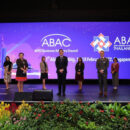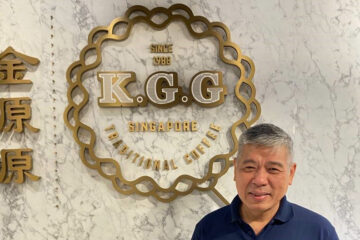
Packing a Punch
Sustainable Packaging gives Businesses an Edge
Packaging waste and plastic pollution is a global problem, made worse by the pandemic which has boosted e-commerce and the delivery of packaged goods around the world.
So, what happens to all the additional packaging material? In Singapore, up to one-third of domestic waste consists of packaging waste, where more than 50% is plastic packaging, which almost always gets incinerated.
So, is there an alternative to plastic packaging?
Yes. Paper and cardboard – made from wood pulp or fibre – were the predominant material for packaging goods of all sorts for many years. And both paper and cardboard are among the most recycled materials around the world.
The wood fibre in the paper and cardboard packaging can be recycled many times – between four and seven times is the industry average – but very much depending on what it is used for.
How does sustainable forest management (SFM) come in and why this is important for everyone in the paper and packaging supply chain?
Why Forests are Important
Forests play a critical role for the global environment, population and economy. Besides alleviating the effects of climate change and natural disasters, they represent some of the richest biological areas on Earth. They also provide food, renewable raw materials for many of our products, and livelihoods for millions of people. Forests also play an important role in preserving biodiversity, as they are home to many different habitats with over 20,000 different species.
At PEFC, we care for forests globally and locally. We work to protect our forests by promoting sustainable forest management (SFM) through certification.
PEFC is an international, non-profit, non-governmental organization which promotes sustainable forest management through independent third party certification.
As an umbrella organization, we endorse national forest certification systems that have been developed through multi-stakeholder processes and tailored to local priorities and conditions.
PEFC is the world’s largest forest certification system, with around 320 million hectares certified in 47 different countries. In fact, 75% of all global certified forest areas are PEFC certified. 20,000 different companies in 83 countries trust PEFC to demonstrate their commitment to sourcing sustainable products.
SFM also creates outcomes that position brands to i) deliver on the United Nations’ Sustainable Development Goals, ii) meet the expectations of sustainability-conscious consumers and iii) ensure supply chain security.
PEFC SEA Private Sector Regional Manager Ms Wikkie Netten, who is responsible for driving awareness and working with forestry supply chain stakeholders in the region, shares that “by working together, we can continue to expand the areas under sustainable forest management, and at the same time, keep in business those which rely of forest products”. Globally only 13% of forests are currently certified, leaving 87% vulnerable for land grabbing, deforestation, and land conversion.

Exemplifying Sustainable Forest Management
Through PEFC certification, diversity of forest nature is protected in many ways. In EU countries, where countries are required to recycle at least 55% of their municipal waste by 2025, 60% by 2030 and 65% by 2035, Finnish forest industry group, Metsä, stands out as a forerunner in ensuring a sustainable and resource efficiency bioeconomy. The main raw material for Metsä Group’s products is renewable wood and their source forests have been managed in accordance with the PEFC certification requirements for 15 years. The Group’s long term success with sustainability is a perfect example of how business sustainability can be in line with the United Nations’ Sustainable Development Goals (SDGs).
Singapore-based paper and packaging supplier, OVOL, previously known as Spicers, has been an eco-friendly paper supplier since March 2009, when it received its first certification from PEFC. OVOL demonstrates that environmentally friendly packaging can cater to a broad range of consumer and commercial products, including food and beverage, postal services, specialised packaging for medication and luxury cosmetics. As Singapore charges ahead with its Singapore Green Plan 2030 goals and targets, the country is also seeing an increase in consumer attention and demand for more sustainable alternatives. OVOL’s pivot to offer more sustainable packaging is therefore a successful early mover strategy to capitalise on new green opportunities for growth.
APP Sinar Mas Group is one of the largest suppliers of pulp and paper in South East Asia and a strong advocate of PEFC certification. To them, sustainable forest management is a critical part of the company’s operations and sustainability. In particular, they take their role in forest fire management very seriously. According to the APP Sinar Mas Group:
“Fires harm the economy, the environment and most importantly people’s lives. This is never acceptable.
Forest fire poses a serious threat for APP. As a company reliant on supplies of pulpwood, it makes no commercial sense for APP suppliers to start fires in order to clear land.
Forest fires destroy plantation wood, and we have already suffered major losses through damage to plantation wood.
Together with our suppliers, we have been working to implement forest fire prevention measures across our suppliers’ concession areas prior to the dry season.”
Triple Bottom Line
When the Singapore government launched the Singapore Packaging Agreement in 2007, it received more than 200 signatories committed to reducing packaging waste. More than 10 years on, the impetus to reduce plastic waste has never been stronger and corporates stand readier to adopt sustainable practices.
With packaging, there is always something better that companies can do to ensure that they meet their triple bottom line- for People, Plant and Profit. Ensuring forest biodiversity is critical and the principles of SFM: to create outcomes that are socially just, ecologically sound, and economically viable are very much aligned with the key pillars of sustainability.



















